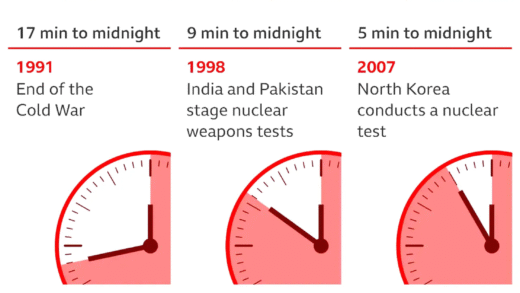This article covers the causes of earthquakes, how tectonic plates interact, types of earthquakes, measuring magnitude, ground effects, immediate impacts on buildings, preparedness tips, long-term environmental consequences, predicting earthquakes, and safety measures during seismic events.
What Causes Earthquakes
Earthquake causes stem from natural processes within the Earth. The primary reason for earthquakes is the movement of tectonic plates. These plates float on the semi-fluid mantle beneath them and can interact in several ways, leading to seismic activity.
When tectonic plates collide, they can cause stress to build up in the Earth’s crust. Once this stress exceeds a certain threshold, the plates slip, releasing energy in the form of seismic waves. This energy release is what we perceive as an earthquake. The most common types of tectonic plate interactions that lead to earthquakes include:
- Convergent Boundaries: Plates collide, causing one to be forced beneath the other, a process known as subduction.
- Divergent Boundaries: Plates move apart, allowing magma to rise and create new crust.
- Transform Boundaries: Plates slide past one another, leading to friction and stress accumulation.
Understanding these mechanisms is crucial for earthquake preparedness and safety.
How Tectonic Plates Interact
Tectonic plates interact through complex movements that significantly impact the Earth’s geology. The interaction of these plates is not just a slow-motion event; it can lead to sudden and violent earthquakes. When two plates grind against each other, the friction can lock them in place for years or even centuries. This locking mechanism creates immense tension.
Once this tension is released, it results in an earthquake. For instance, the San Andreas Fault in California is a well-known transform boundary where the Pacific Plate moves past the North American Plate. The interaction at this boundary has caused numerous significant earthquakes. The energy release can vary in magnitude, leading to minor tremors or devastating quakes.
Understanding how tectonic plates interact helps scientists predict potential earthquake zones, which is vital for community safety.
Types of Earthquakes
There are several types of earthquakes, classified based on their causes and characteristics. The main types include:
- tectonic earthquakes: These are caused by the movement of tectonic plates.
- volcanic earthquakes: Resulting from volcanic activity, these earthquakes occur due to the movement of magma.
- collapse earthquakes: These occur when underground caves or mines collapse.
- explosion earthquakes: Caused by explosions, such as those from nuclear tests or mining.
Each type has distinct characteristics and can vary in intensity. For example, tectonic earthquakes can range from minor tremors to catastrophic events that reshape landscapes and communities.
Knowing the types of earthquakes is crucial for understanding their potential impact and preparing for them effectively.
Measuring Earthquake Magnitude
Measuring earthquake magnitude is essential for understanding the strength of an earthquake. Scientists use several scales to quantify this strength, with the most common being the Richter scale and the Moment Magnitude scale (Mw). The Richter scale, developed in 1935, measures the amplitude of seismic waves recorded by seismographs. This scale is logarithmic, meaning that each whole number increase on the scale represents a tenfold increase in measured amplitude and approximately 31.6 times more energy release.
The Moment Magnitude scale, which has largely replaced the Richter scale, provides a more accurate measure of larger earthquakes. It takes into account the area of the fault that slipped, the average amount of slip, and the rigidity of the rocks involved. This scale is also logarithmic and is particularly useful for assessing the size of significant earthquakes.
Understanding these scales helps communities prepare for earthquakes. By knowing the magnitude, emergency services can respond more effectively to disasters, ensuring safety and minimizing damage.
Ground Effects During an Earthquake
Ground effects during an earthquake can be dramatic and varied. The shaking of the ground leads to several physical changes, including ground rupture, surface waves, and liquefaction. Ground rupture occurs when the earth’s surface breaks due to fault movement, often creating visible fissures.
Surface waves, which travel along the Earth’s surface, can cause the ground to roll and sway. This movement can lead to significant damage, particularly in areas with loose or saturated soil. Liquefaction is a fascinating phenomenon where saturated, unconsolidated soil temporarily loses its strength and behaves like a liquid during shaking. This can cause buildings to tilt or even sink.
Residents should be aware of these ground effects to understand the risks involved in earthquakes and to prepare accordingly. Knowing the potential changes to the ground helps communities develop better infrastructure and safety protocols.
Immediate Effects on Buildings
Immediate effects on buildings from earthquakes can be severe and alarming. The force of the shaking can lead to structural damage, causing walls to crack, roofs to collapse, and foundations to shift. Buildings designed without earthquake resistance may suffer catastrophic failures, while those built to modern seismic standards often fare better.
During an earthquake, the ground motion creates lateral forces that can compromise a building’s integrity. For instance, taller buildings may sway, which can lead to structural failure if not properly designed. Reinforced structures, with features like cross-bracing and shear walls, are better equipped to withstand such forces.
Awareness of these immediate effects encourages homeowners and builders to invest in earthquake-resistant designs and materials. Proper planning and construction can significantly reduce the risk of damage and ensure safety during seismic events.
Earthquake Preparedness Tips
Earthquake preparedness is essential for minimizing risk and ensuring safety during seismic events. Here are actionable tips to help individuals and families prepare for potential earthquakes:
- Create an Emergency Plan: Develop a plan that outlines how family members will communicate and where to meet after an earthquake.
- Build an Emergency Kit: Include essentials such as water, non-perishable food, first aid supplies, flashlights, and a battery-operated radio.
- Secure Heavy Items: Anchor heavy furniture, appliances, and other items that could fall and cause injury during shaking.
- Practice Drop, Cover, and Hold On: Regularly conduct drills with family members to ensure everyone knows how to respond when the ground shakes.
- Stay Informed: Familiarize yourself with local emergency services and resources available in your community.
These steps can significantly enhance your readiness and ability to respond effectively during an earthquake.
Long-Term Consequences on Environment
Earthquakes can have profound long-term consequences on the environment and communities. After a major seismic event, several factors come into play:
- Land Deformation: Earthquakes can permanently alter the landscape, creating new faults and changing river courses.
- Impact on Ecosystems: The destruction of habitats can lead to loss of biodiversity, as flora and fauna struggle to adapt to the new conditions.
- Soil Stability: Changes in soil composition and structure can result in increased landslides and erosion, affecting agriculture and water resources.
- Community Displacement: Rebuilding efforts can take years, forcing residents to relocate and disrupting local economies.
Understanding these long-term impacts is crucial for effective recovery planning and environmental management.
Predicting Earthquakes
Can scientists foresee earthquakes? While predicting the exact time and location of an earthquake remains elusive, advances in technology have improved our understanding of seismic patterns. Here are key points on earthquake prediction:
- Seismic Monitoring: Networks of seismometers provide real-time data on ground movements, helping scientists identify potential earthquake zones.
- Statistical Models: Researchers use historical data to analyze patterns and assess the likelihood of future seismic activity in specific regions.
- Warning Systems: Early warning systems can provide seconds to minutes of advance notice, allowing people to take cover and automated systems to shut down critical infrastructure.
While complete prediction is not yet achievable, these efforts enhance preparedness and safety for communities at risk.
Safety Tips During an Earthquake
Knowing what to do during an earthquake is vital for personal safety. Here are essential safety tips to follow:
- Drop, Cover, and Hold On: Drop to your hands and knees, cover your head and neck, and hold on until the shaking stops.
- Stay Indoors: If indoors, remain there. Avoid windows and heavy furniture that might fall.
- If Outside: Move to an open area away from buildings, trees, streetlights, and utility wires.
- If Driving: Pull over to a safe location, stay inside the vehicle, and avoid stopping under overpasses or bridges.
- After the Shaking Stops: Check yourself and others for injuries, and be prepared for aftershocks.
Following these tips can help ensure personal safety and minimize injuries during an earthquake.





Comments are closed.